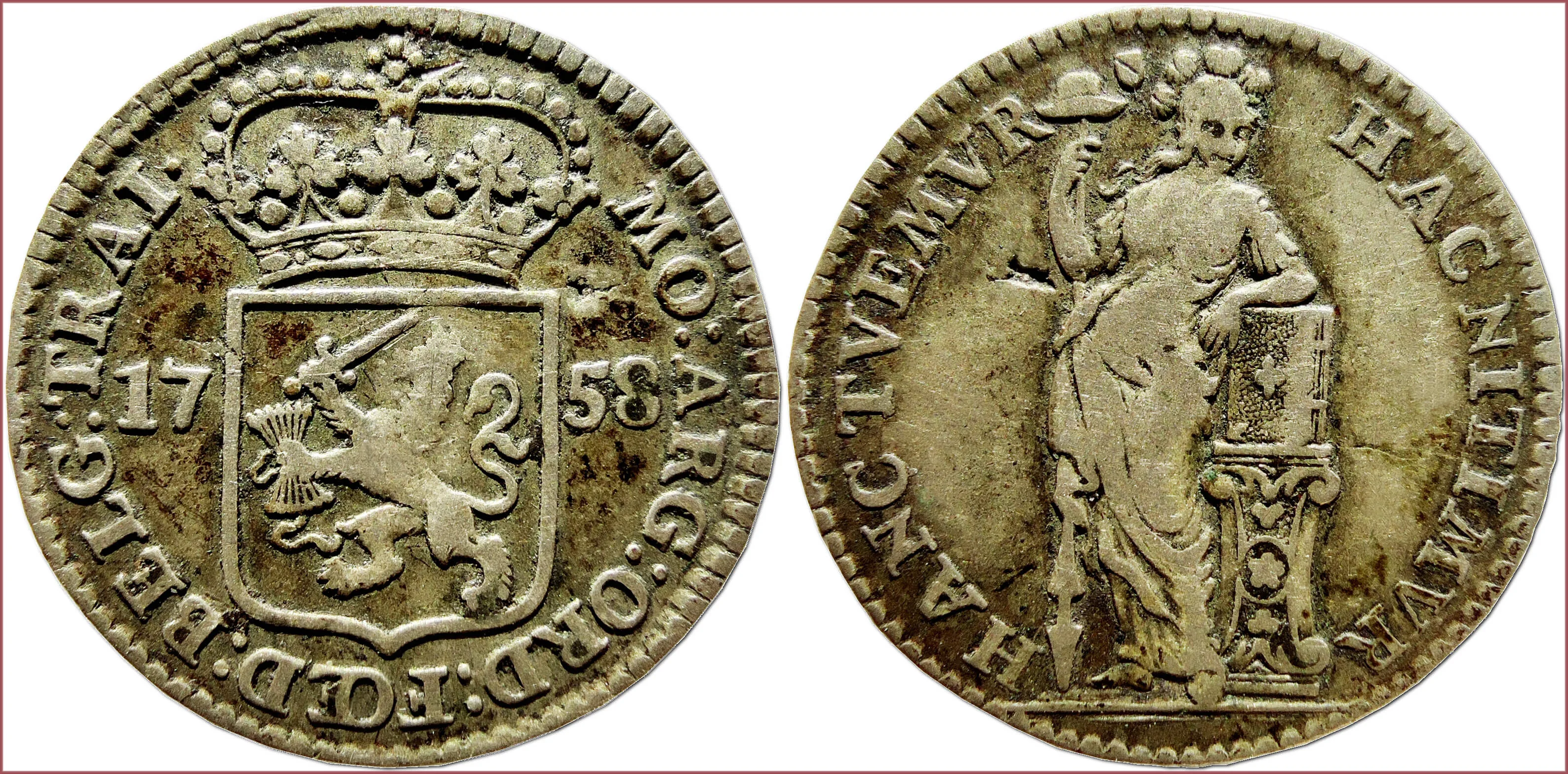GULDEN: COIN OF NETHERLANDS (UTRECHT)
1/4 gulden, 1758: The Republic of the Seven United Netherlands
This coin does not contain a directly stated denomination. Therefore, it is not surprising that some numismatic catalogs describe it differently — as 5 stuiver (equivalent to 1/4 gulden).
MO ARG ORD FŒD BELG TRAI (Moneta Argentea Ordinum Foederatorum Belgii Traiectum): Silver currency (coin) of the United Netherlands, Utrecht /Traiectum — a settlement founded by the Romans on the territory of modern Utrecht/.
Small coat of arms of the Republic of the Seven United Netherlands (crowned heraldic shield depicting standing lion with a raised sword and bunch of 7 arrows).
HAC NITIMUR - HANC TVEMUR: This /liberty/ we defend and on this /belief/ we rest.
Athena (ancient Greek goddess associated with wisdom, handicraft, and warfare) with Hat of Liberty on the spear and Gospels (or Holy Bible) on ornate basis. — Some sources indicate that the Dutch Virgin Mary is depicted on the coin (in my opinion, this is a more logical version).
Utrecht Mint.
- Silver (0.920): 23 mm - 2.76 g
- Reference price: 29$
COIN GULDEN — WHERE & WHEN (coins catalog: by names & emitents)
- NETHERLANDS (16th-21th centuries) — SPANISH NETHERLANDS + DUTCH REPUBLIC /THE REPUBLIC OF THE SEVEN UNITED NETHERLANDS/ + BATAVIAN REPUBLIC + KINGDOM OF HOLLAND + KINGDOM OF THE NETHERLANDS: gulden = 20 stuiver; gulden = 100 cent (from 1817)
- NETHERLANDS EAST INDIES (18th-20th centuries): gulden = 96 duit
- NETHERLANDS WEST INDIES (18th century): gulden = 20 stuiver
- NETHERLANDS ANTILLES, including Curaçao (20th-21th centuries): gulden = 100 cent
- SURINAME (1962-2000): gulden = 100 cent
- FRANCE (16th-18th centuries) — Imperial City of Colmar, City of Hagenau...: gulden = 60 kreuzer
- GERMANY (14th-19th centuries) — Grand-duchy of Baden, Bishopric of Bamberg, Kingdom of Bavaria, Free imperial city of Frankfurt, Bishopric of Würzburg...: gulden = 60 kreuzer = 2/3 thaler
- SWISS CANTONS (17th-18th centuries) — City of Lucerne, City of Schwyz, City of Zürich...: gulden = 1/2 thaler
- FREE CITY OF DANZIG (1923-1935): gulden = 100 pfennig
About the name of the coin gulden: some English-language numismatic sources indicate the name of the coin in the "guilder" format. In my opinion, this is incorrect. Historically, it is fair to call this coin "gulden".
However, there is a type of coins that is actually a guilder (this is how the denomination is indicated directly on these coins). It is about the coins of British Guyana (before 1831: Demerara-Essequibo) — British colony, part of the mainland British West Indies (South America).
As for the origin of the gulden's coin name (originally — the old German gold coin), it is safe to say: the name comes from "guldin pfenninc" ("gold pfennig") — a German-speaking local name common in many parts of Europe at the time the Italian gold coin florin (Italian "Fiorino d'oro").











